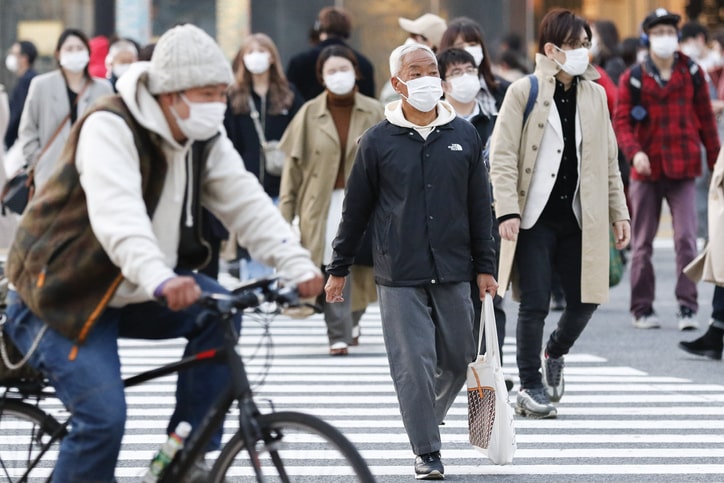We’re now well into our third year with COVID, and many countries have been devastated by waves of the virus. But Japan has been hailed as a success story among tragedies.
Cultural factors and strict policies have helped Japan keep its COVID metrics down and its systems functioning well. Still, Omicron threatens to throw a wrench in the country’s well-oiled machine.
Japanese COVID death numbers have remained incredibly low, in comparison to similar countries. Japan has averaged 156.62 deaths per million – just 2% of the US level. Some measures even pin overall death numbers as lower than normal, due to declines in other causes of death like the flu and pneumonia.
This is despite Japan having one of the world’s oldest populations, with an average age of 46. Almost a third of citizens are over 65 years old.
Large outbreaks the likes of which have ripped through America and Europe have been largely avoided in Japan.
These successes have even given rise to a new Japanese exceptionalism in the country.
Former PM Taro Aso (now Vice President of Japan’s ruling party) ascribed the low death rate to the “superiority of the Japanese people”, using similar language to Japan’s pre-war imperialism. A right-wing newspaper linked Japanese success to “the experience and wisdom of their ancestors.”
Keys to success: cultural norms and tight borders
Cultural pressure is partly responsible for the country’s achievements. Even before the pandemic, mask wearing was relatively common, and mask mandates encountered little resistance. One study also showed Japanese peer pressure was the primary motivation for mask-wearing among most individuals.

Similarly, vaccination campaigns have progressed without opposition. Japan’s double-vaccination rate is 80.5% – significantly higher than the US and UK. Despite this, under Omicron record numbers of Japanese are being ordered to recover from COVID at home. In some cases, patients in need of oxygen administration were forced to remain at home.
Contact tracing, highly bureaucratised in the country, helped keep transmission in check. Still, under Omicron the tracing system has become overloaded, lacking its prior efficiency.
One of the strongest measures the state implemented was a harsh border policy. In the early days of the pandemic, Japan’s border ban was so strict even foreigners with permanent residence status couldn’t enter. Now, rules have relaxed a little, but almost all foreign entries – even with visas – are on pause.
This near-blanket travel ban was announced by Prime Minister Kishida in November 2021. Only citizens and returning foreign residents are allowed in, and even so, arrivals are capped at 3,500 per day. Hundreds of thousands of relatives and students remain ‘locked out’, in limbo.
According to a survey from December of last year, nearly 90% of Japanese supported Kishida’s tightened travel restrictions. But the business and international communities have not been so supportive.
Business lobbies are pushing for the government to ease border restrictions. Many complain the ban inhibits attracting foreign talent, and prevents important business deals from taking place in person. International student numbers have also dropped by more than 30,000 since 2019.
Other experts say the ‘neo-sakoku’ policy (referencing the hermit Japan of 1700-1900) alienates allies, putting Japan out of step with other G7 democracies. Last week the Deputy Chief Cabinet Secretary Siji Kihara suggested “It’s quite possible to raise [the daily limit of entries] to 5,000.”
But it looks like Japan won’t be able to dodge Omicron entirely, especially with booster rates lagging. Daily case numbers have passed 70,000 for the first time since the pandemic’s beginning, and the country recently topped 20,000 deaths. With business pushing for openness and Omicron encouraging restriction, it’s hard to predict whether Japan will get its happy ending.
Cover photo by Liam Burnett-Blue on Unsplash.
Follow Maddie’s journalism journey on Twitter.
Sign Up To Our Free Newsletter